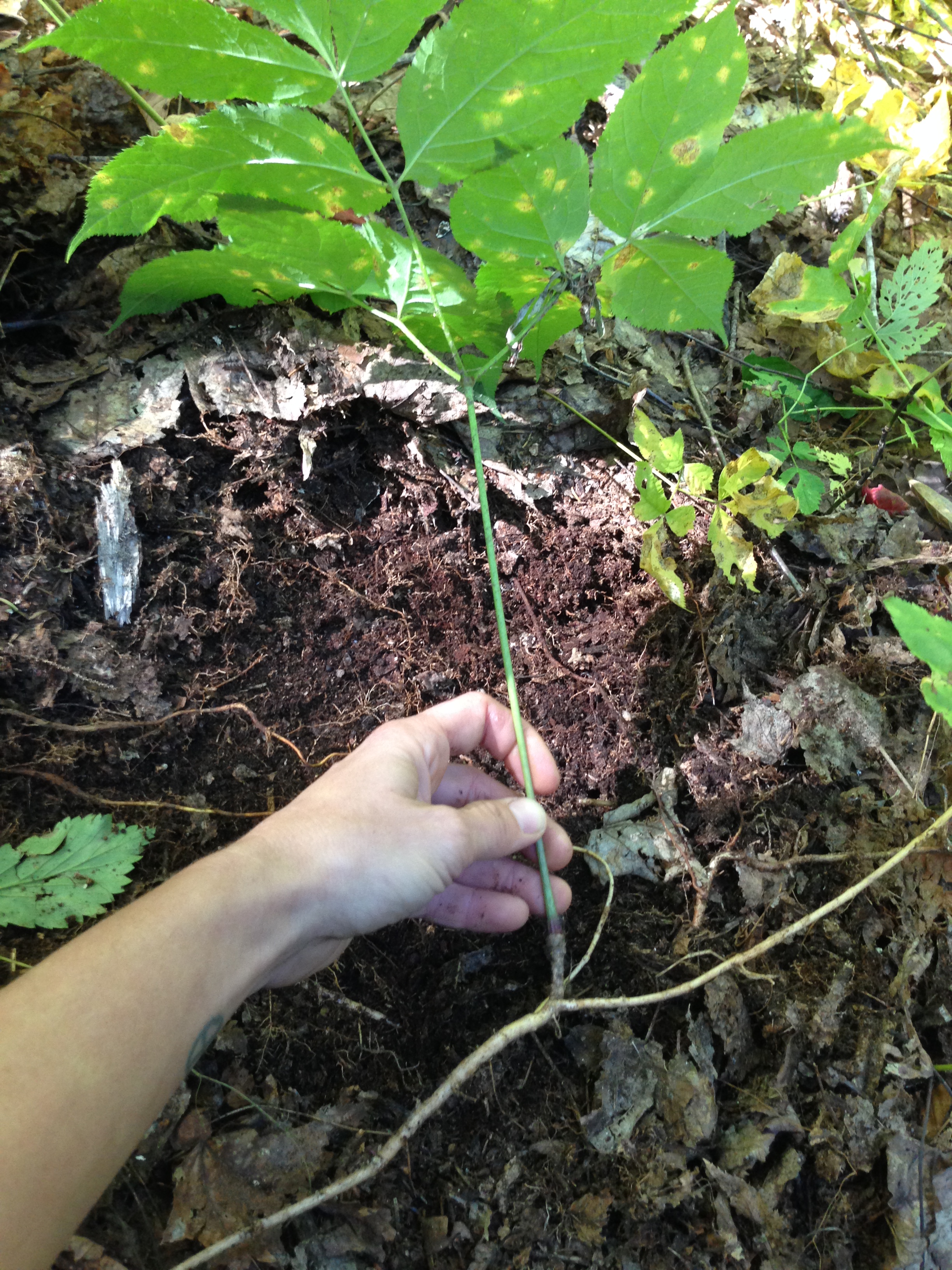I’m quite excited about the Aralia family. Of this family, I’m most acquainted with the elusive Panax quinqufolius, the five-leaved friend American ginseng (thanks to my time at the United Plant Savers Sanctuary), and the stately larger cousin Aralia racemosa, or Spikenard, although I have had brief lucky occasions to meet another even larger cousin, Aralia californica, or California Spikenard.
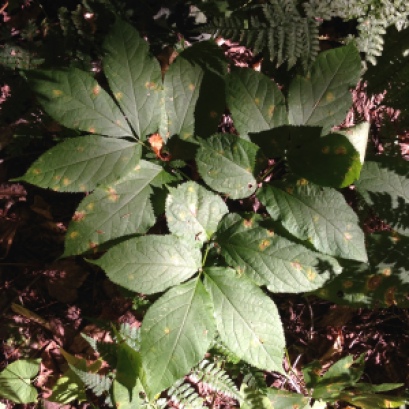
Since I’ve been living in the northern hardwood forests of Vermont, I’ve been so curious about the smaller and commoner creature Aralia nudicaulis, confusingly called many adorable names including wild sarsaparilla, false sarsaparilla, shot bush, small spikenard, wild liquorice, and rabbit root. How, I’ve been wondering, does the smaller Aralis nudicaulis compare in its medicine?
BOTANY & BIOGEOGRAPHY
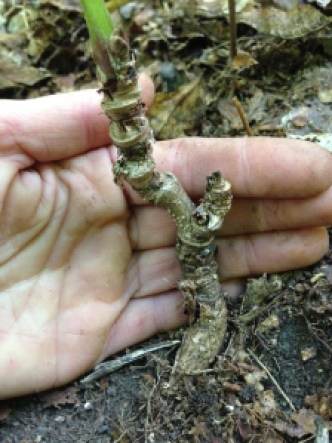 The North American Spikenards are in the Aralia or Ginseng Family (Araliaceae) and are closely related to the Apicaeae (Umbelliferae) family of Parsley and Carrot kin. The Aralias tend to have solid sturdy stems and succulent berries, ovate or egg-shaped leaves with slight serrations and fine pointed tips, delicate umbel-like flowers, and an overall elegance to their general profile. Traditionally thought to contain the strongest medicine, the root grows down directly from the stem for several inches into the soil and sends out secondary runners horizontally, from which new plants emerge, connecting the group through the forest floor. The dark purple-black fruit needs lots of moisture to germinate the seeds, however, which makes all Aralias most abundant in wet climates and far more particular about habitat than their more adaptable Carrot family relatives.
The North American Spikenards are in the Aralia or Ginseng Family (Araliaceae) and are closely related to the Apicaeae (Umbelliferae) family of Parsley and Carrot kin. The Aralias tend to have solid sturdy stems and succulent berries, ovate or egg-shaped leaves with slight serrations and fine pointed tips, delicate umbel-like flowers, and an overall elegance to their general profile. Traditionally thought to contain the strongest medicine, the root grows down directly from the stem for several inches into the soil and sends out secondary runners horizontally, from which new plants emerge, connecting the group through the forest floor. The dark purple-black fruit needs lots of moisture to germinate the seeds, however, which makes all Aralias most abundant in wet climates and far more particular about habitat than their more adaptable Carrot family relatives.
[Aralia Nudicaulis] has roots (actually underground stems) that grow laterally. This signifies communication that is dispersed in a web of synapse alongside the mycelial network. This transmits information in a matrix that, instead of being concentrated up and down, is dispersed outward where it is less centered, more continuous and evenly distributed. . . This contiguity allows for easy networking from plant to plant providing steadily accessible nutrients, perception and expression. . . When standing among a patch, or really it’s a sea, of Wild Sarsparilla there is always a feeling of aliveness, awareness and alertness but without feeling over-stimulated, as if my cells are being provided just the precise amount of energy required that can be effectively metabolized and released.
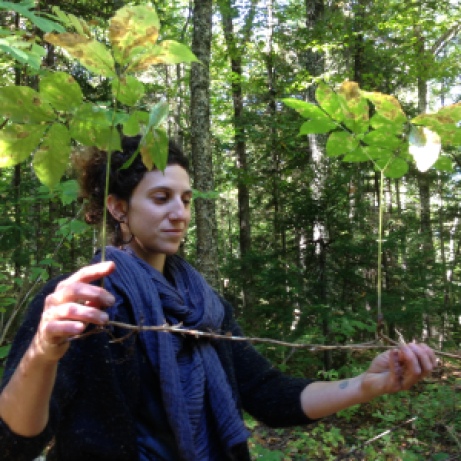 While the Aralia racemosa, which can grown to be as tall as my own five foot stature, seems to me to grow more solitarily in damp rich woods with sweeter soils, the knee-high Aralia nudicaulis seems slightly less picky, often making a thick layer in drier and more acidic soils amidst the fall of hemlock leaves. While digging Aralia racemosa is an undertaking for which I set aside at least an hour to unearth a good chunk of root and runner, Aralis nudicaulis feels like a less invasive harvest, where I can often dig from one out of every thirty plants I can see.
While the Aralia racemosa, which can grown to be as tall as my own five foot stature, seems to me to grow more solitarily in damp rich woods with sweeter soils, the knee-high Aralia nudicaulis seems slightly less picky, often making a thick layer in drier and more acidic soils amidst the fall of hemlock leaves. While digging Aralia racemosa is an undertaking for which I set aside at least an hour to unearth a good chunk of root and runner, Aralis nudicaulis feels like a less invasive harvest, where I can often dig from one out of every thirty plants I can see.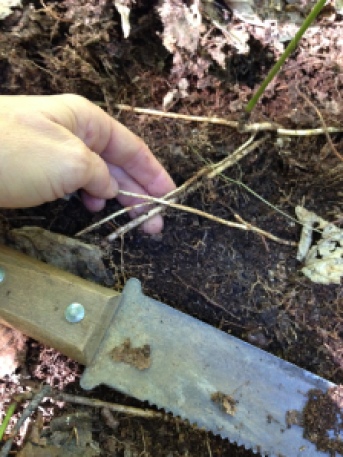
Michael Moore differentiates the Aralia genus into two distinct sorts of species, one with woods stems, acrid aromas, and spines (Aralia spinosa, or Devil’s Walkingstick) and the other which are the Aralia that we are presently mulling over, which are more characterized by juicier roots, herbaceous annual growth, a spicy sweet, cool and moist, and generally higher concentrations of saponins, aralosides, and ginsenosides. He loosely groups Aralia racemosa, Aralia nudicaulis, Aralia californica, and Aralia humulis, the last of which is primarily a creatures of the southwestern United States.
DIFFERENTIATING ARALIAS: ADAPTOGEN & PULMONARY MEDICINE
Aralias tend to have adaptogenic properties, which in Western herbalism most often means that this is an herbs which may have one or many of a broad array of tactics which assists the human in adapting to stress. In my experience, large Aralia racemosa is also a warming lung tonic which is helpful in the dampness of fall and winter in the southern climates. Other southern herbalists have expressed an opinion I share, which is that the larger and spicier spikenard possesses more adaptogenic properties than the smaller wild sarsaparilla. While many herbalists and researchers agree that the Spikenard Aralias overlaps in adaptogenic and respiratory actions, there is inevitable disagreement in how the specific indications for each species compare.
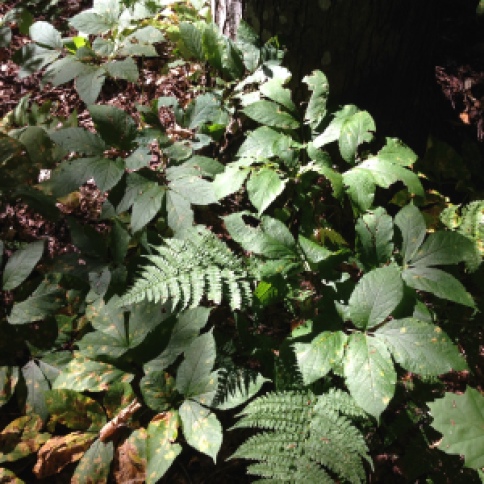
According to researchers Li, O’Neill, et al, in the Journal of Ethnopharmacology (2012), First Nations people of east Canada, including Algonquin and Iroquois people, were known to brew tea of the dried root of wild sarsaparilla for lung conditions including irritating mucous-producing coughs and tuberculosis. The researchers also noted that water extracts of the roots were show in laboratory trials to have antimycobacterial activity, which supports the use of this herb in combating the colonizing of fungus-like bacteria such as tuberculosis. Harvey and Felter, the physiomedicalists responsible for King’s American Dispensatory published in 1898, agreed that the racemosa and nudicaulis may be used similarly in cases of “pulmonary affections,” with specific indications for lax or “atonic” states of irritation and excess mucous in the respiratory tract.
Moore offers a broader usage that places Aralias in an adaptogen-like category, recommending them as long-term tonic herbs which “offer the Ginseng-like effects of modifying metabolic and emotional stresses.” He does, however, differentiate the specific indications for Aralia racemosa as more strongly pulmonary in application compared to the other three Aralias (as written in his Medicinal Plant Folios).
SPECIFIC INDICATIONS (Michael Moore, SWSBM)
Aralia Aralia californica, Aralia humilis, Aralia nudicaulis + Adrenal cortex hypofunctions + Blood serum levels: hyperlipidemia
Aralia racemosa + Chronic coughing with excess secretions; bronchorrhea + Chronic laryngitis with excess, abundant mucus + Chronic pharyngitis with thick tenacious mucus + Chronic bronchitis with profuse secretions and debility + Subacute cystitis with mucus in urine, no odor + Adaptogen similar to Panax + Adrenal cortex hypofunctions + Primipara, with irritability, distress in last trimester + Subanemic blood with hypersensitivities
BLOOD TONICS & CANCER PREVENTION
Laboratory research loves to investigate cancer-inhibiting potential in herbal medicines — cancers are, after all, devastating conditions that significantly alter a person’s existence, and of course they offer lucrative opportunity to the medical, pharmaceutical, and nutriceutical industries.
Traditional use of “blood cleansing” herbs, however, supports the use of some herbs as cancer-preventing. In his writing on herbal first aid, Matthew Wood discusses the philosophy, held in many First Nations medicine traditions as well as in Chinese herbalism, that perceives certain conditions as “stagnant blood,” indicating sluggish or inadequate circulating and poorly oxygenated blood, predisposing the body toward cancerous growth. Angelica and sassafras have both been known for their blood-moving and alterative properties in such conditions.
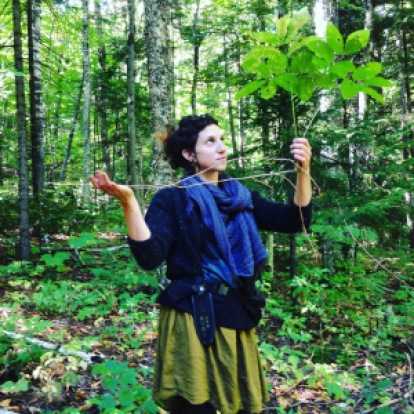 Perhaps more specific and particular than categorizing wild sarsaparilla as adaptogenic is to understand it as an alterative which offers tonifying support to adrenal function. Lisa Fazio notes that Iroquois peoples used the Aralia nudicaulis as “blood medicine,” particularly for rheumatic and diabetic situations in which circulation was impeded and therefore allowing buildup in the blood of compound which should otherwise have been excreted. In her writing on Aralia nudicaulis, she notes the following specific indications:
Perhaps more specific and particular than categorizing wild sarsaparilla as adaptogenic is to understand it as an alterative which offers tonifying support to adrenal function. Lisa Fazio notes that Iroquois peoples used the Aralia nudicaulis as “blood medicine,” particularly for rheumatic and diabetic situations in which circulation was impeded and therefore allowing buildup in the blood of compound which should otherwise have been excreted. In her writing on Aralia nudicaulis, she notes the following specific indications:
+ Excess androgens, hormone dysregulation; acnes, PCOS + Sluggish cellular metabolism + Malnourished states; depletions of calcium, potassium, magnesium, iron, and zinc + Tissue repair, including bone, connective tissue, arthritic conditions + Inflammatory join conditions, particularly auto-immune conditions + Deficiency conditions leading to muscle wasting, weight loss, and weakness
ROOTS & HONEY: HOW TO TAKE THE MEDICINE
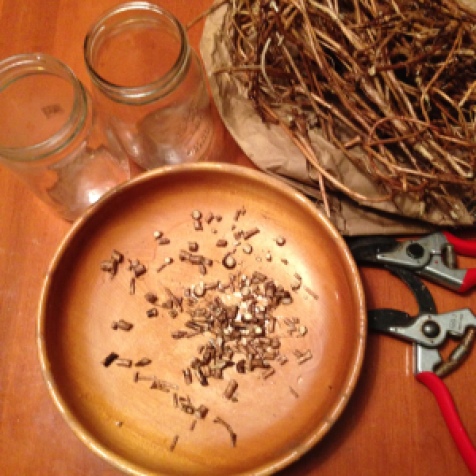 I think my approach this coming fall in understanding this medicine is going to be through the lens of re-patterning and balancing. Whatever the bio-chemical or physiological actions of these roots on the lungs, adrenals, immune cells, or circulation, the humble and sturdy Aralia nudicaulis gently urges me toward in a sideways reach, as if for a helpful hand or to collaborate, to steadily keep moving and re-moving obstacles from the path of resilience, so that the cells and tissues and mysterious systems can go about doing what they do best.
I think my approach this coming fall in understanding this medicine is going to be through the lens of re-patterning and balancing. Whatever the bio-chemical or physiological actions of these roots on the lungs, adrenals, immune cells, or circulation, the humble and sturdy Aralia nudicaulis gently urges me toward in a sideways reach, as if for a helpful hand or to collaborate, to steadily keep moving and re-moving obstacles from the path of resilience, so that the cells and tissues and mysterious systems can go about doing what they do best.
 Roots are best dug in the fall or spring, and then chopped and dried for a decoction or fresh tinctured in high-proof alcohol. Harvey and Felter recommends dosage of 5 to 30 drops of the tincture in water, given 4 times per day. I have had great success with infusing fresh chopped Aralia racemosa roots in raw honey; the outcome is spicy, sweet, and warming. If you try adding an Aralia nudicaulis honey to your apothecary shelf this fall, do write and tell me your experiences! I’ll write you back with mine.
Roots are best dug in the fall or spring, and then chopped and dried for a decoction or fresh tinctured in high-proof alcohol. Harvey and Felter recommends dosage of 5 to 30 drops of the tincture in water, given 4 times per day. I have had great success with infusing fresh chopped Aralia racemosa roots in raw honey; the outcome is spicy, sweet, and warming. If you try adding an Aralia nudicaulis honey to your apothecary shelf this fall, do write and tell me your experiences! I’ll write you back with mine.
SOURCES
Li H1, O’Neill T, Webster D, Johnson JA, Gray CA. Anti-mycobacterial diynes from the Canadian medicinal plant Aralia nudicaulis. J Ethnopharmacol. 2012 Mar 6;140(1):141-4. doi: 10.1016/j.jep.2011.12.048. Epub 2012 Jan 3.
Felter, H.W., and Lloyd, J.U. King’s American Dispensatory. 1898.
Moore, Michael. Plant Folios: Aralia, Spikenard. http://www.swsbm.com/FOLIOS/AraliFol.pdf
Fazio, Lisa. Hawthorne Hill Herbs. Aralia nudicaulis. http://www.hawthornehillherbs.com/node/227
Herrick, James. Iroquois Medical Botany.
